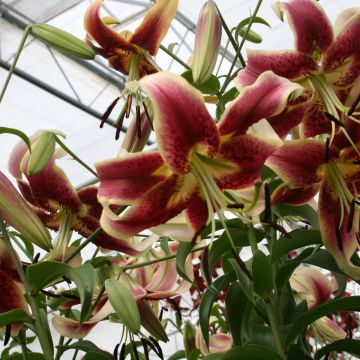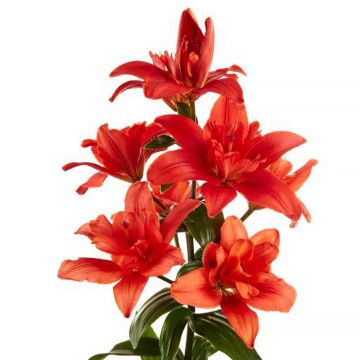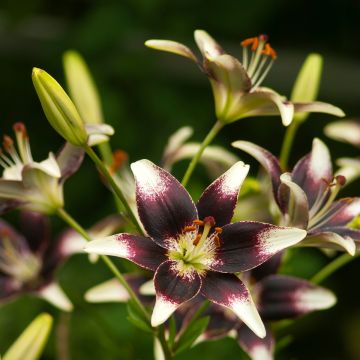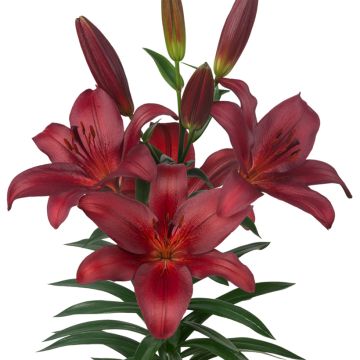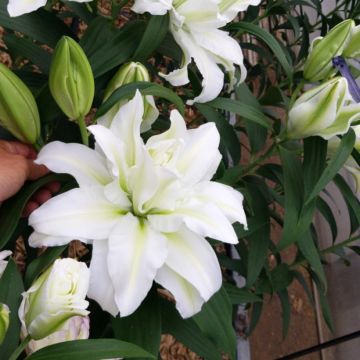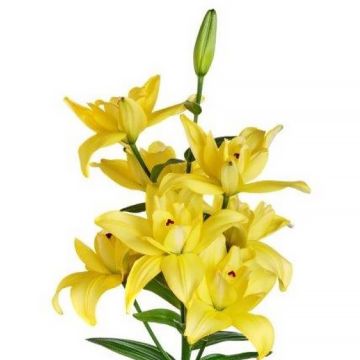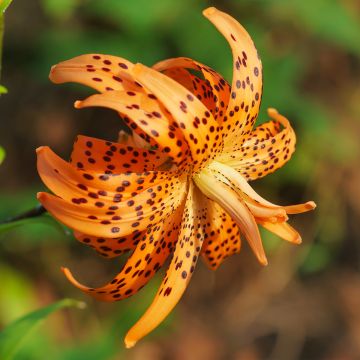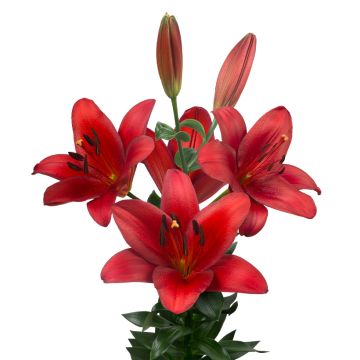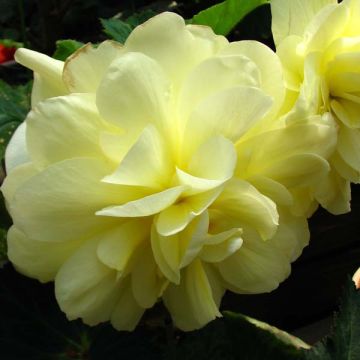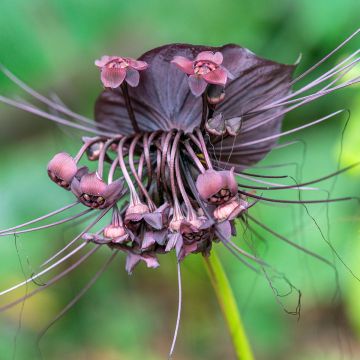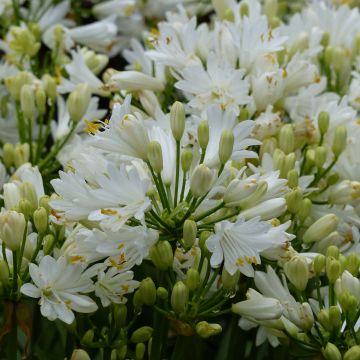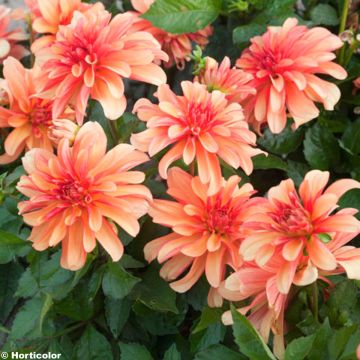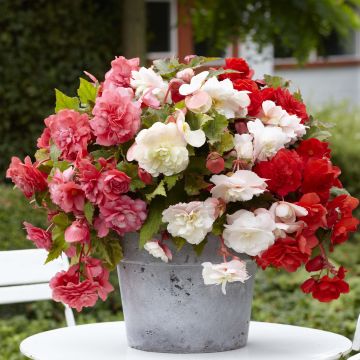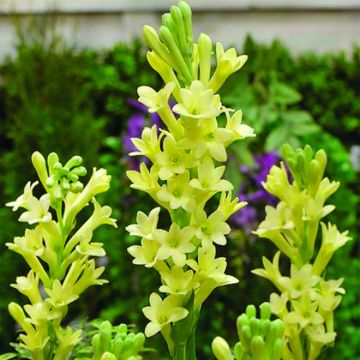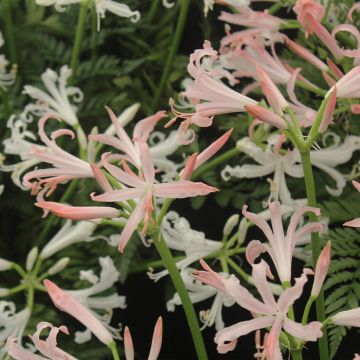Shipping country and language
Your country of residence may be:
Your country of residence is:
For a better user experience on our website, you can select:
Your shipping country:
-
Andorra
-
Austria
-
Belgium
-
Bulgaria
-
Canada
-
Chile
-
Croatia
-
Cyprus
-
Czechia
-
Denmark
-
Estonia
-
Finland
-
France
-
Germany
-
Greece
-
Hungary
-
Iceland
-
Ireland
-
Italy
-
Latvia
-
Lithuania
-
Luxembourg
-
Malta
-
Monaco
-
Netherlands
-
Poland
-
Portugal
-
Romania
-
Slovakia
-
Slovenia
-
Spain
-
Sweden
-
Switzerland
-
United Kingdom
We only deliver seed and bulb products to your country. If you add other products to your basket, they cannot be shipped.
Language:
-
French
-
German
-
Spanish
-
English
-
Italian
My Account
Hello
My wish lists
Log in / Register
Existing customer?
New customer?
Create an account to track your orders, access our customer service and, if you wish, make the most of our upcoming offers.
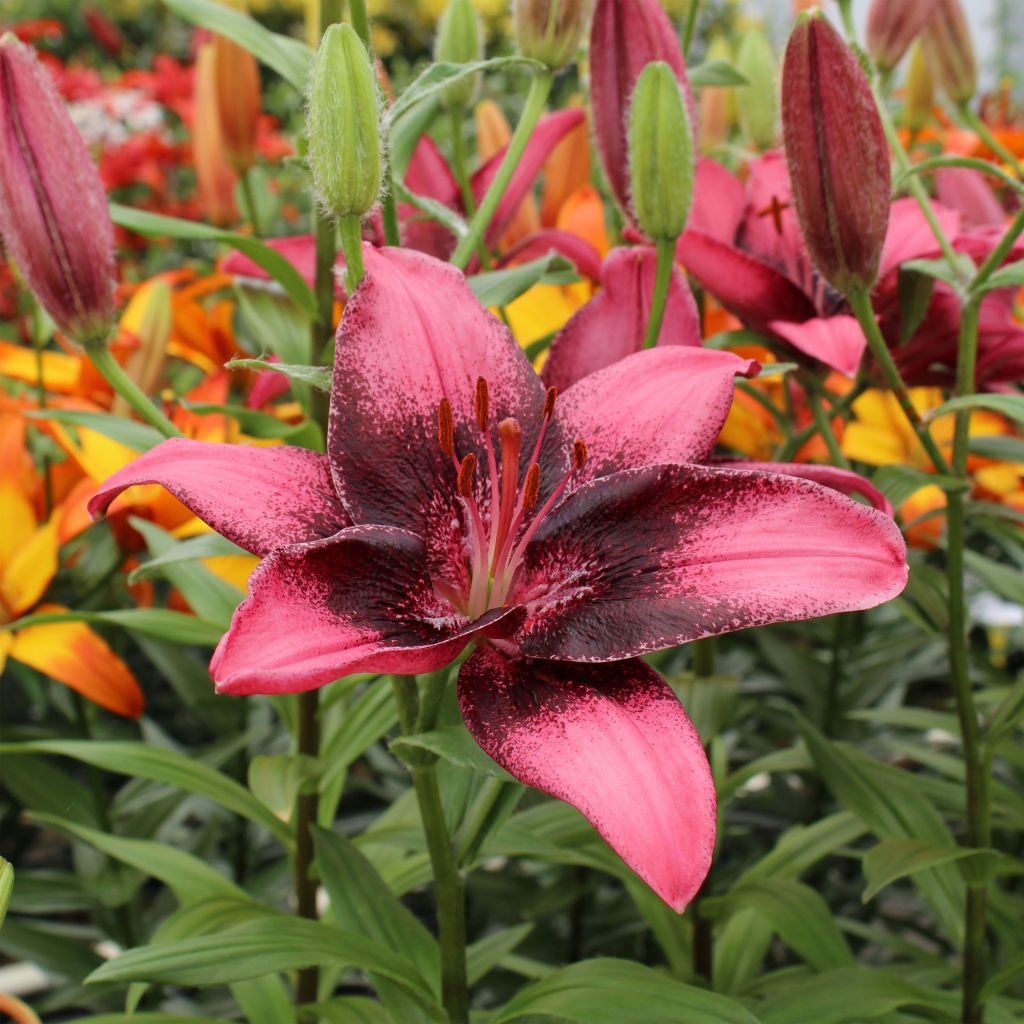

Lilium Purple Eye - Hybride de Lis asiatique
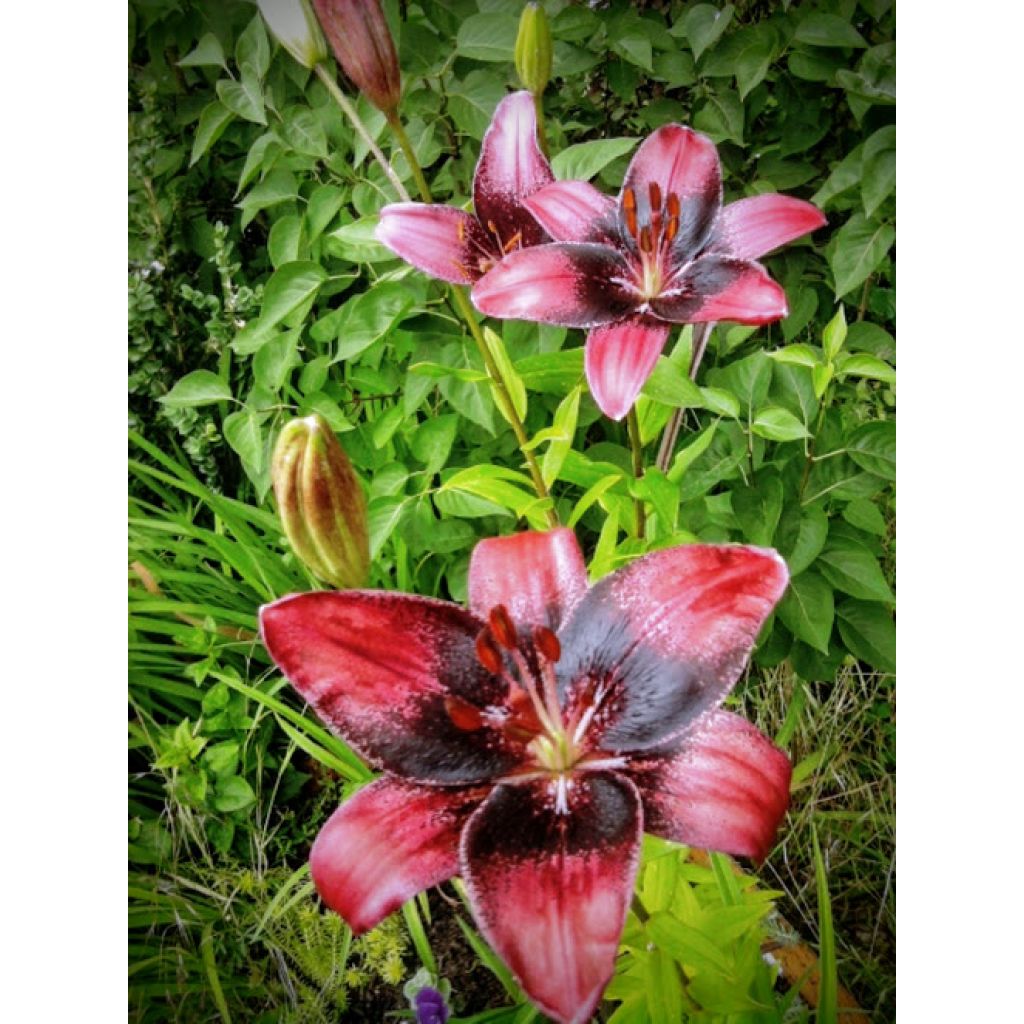

LIS HYBRIDE ASIATIQUE-LILIUM PURPLE EYE
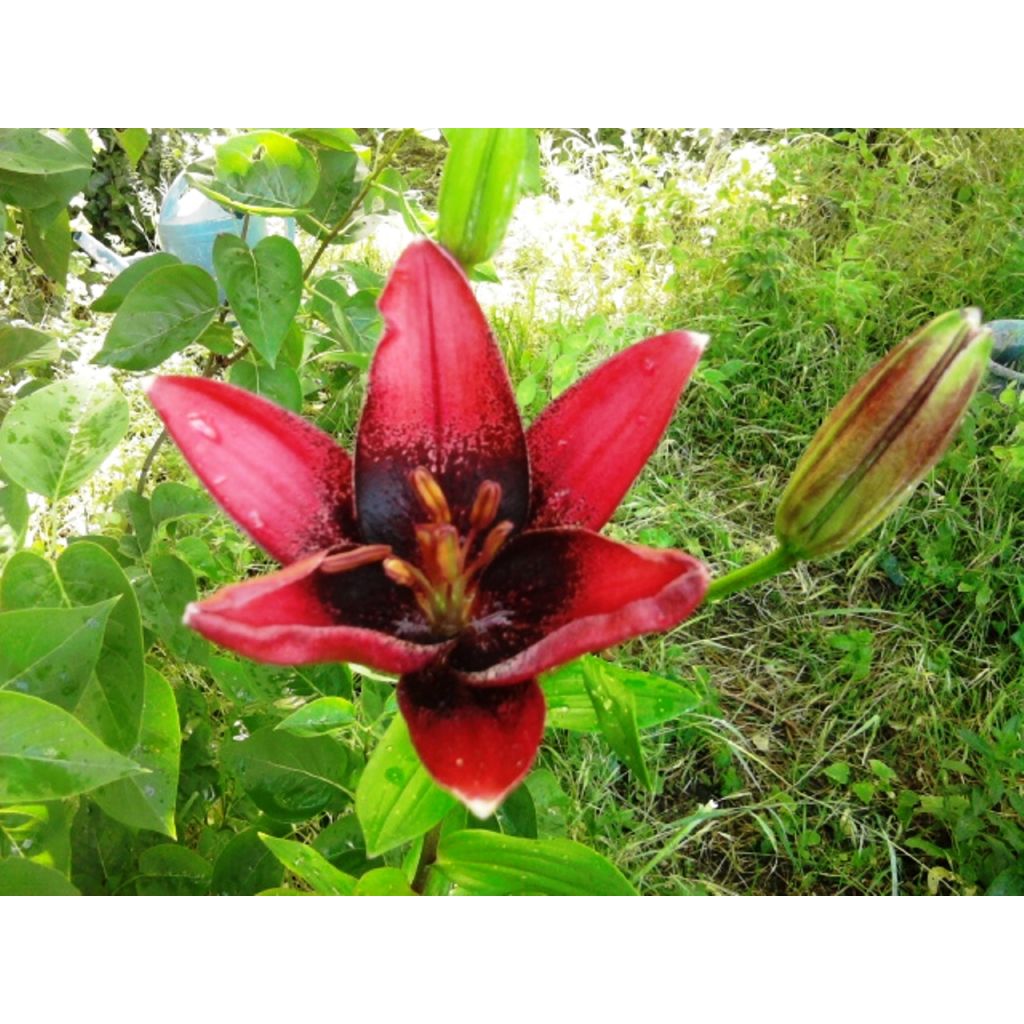

LIS HYBRIDE ASIATIQUE-LILIUM PURPLE EYE
Lilium Purple Eye
Lilium x asiatica Purple Eye
Asiatic Lily
Very good packaging of bulbs, impeccable size.
basile, 19/04/2020
Order in the next for dispatch today!
Dispatch by letter from €3.90.
Delivery charge from €5.90 Oversize package delivery charge from €6.90.
More information
This item is not available in your country.
Schedule delivery date,
and select date in basket
This plant carries a 6 months recovery warranty
More information
We guarantee the quality of our plants for a full growing cycle, and will replace at our expense any plant that fails to recover under normal climatic and planting conditions.
From €5.90 for pickup delivery and €6.90 for home delivery
Express home delivery from €8.90.

Does this plant fit my garden?
Set up your Plantfit profile →
Description
Lilium 'Purple Eye' is a large hybrid Asiatic lily which is original and fascinating. This true novelty offers spectacular flowers in a completely unprecedented colour. Each flower is bicoloured, satin pink-violet marked by an eye-catching wide central halo of such dark purple it almost appears black. This generous variety produces up to 12 star-shaped flowers per stem, widely open to the sky, quite early in the season. Asiatic lilies are floriferous and easy to grow in humus-rich, light soil. It is a robust and easy-to-grow plant, simply excellent in borders or bouquets.
Lilium 'Purple Eye' is a deciduous bulbous plant, with an imposing, narrow and upright habit from spring. It belongs to the lily family. This plant will easily reach 90 cm (35in) high, even 1.20 m (4ft), getting stronger over the years. The clump will spread without theoretical limit over time, with the bulbs producing bulblets through vegetative multiplication. The spectacular flowering takes place in July-August with up to 12 flowers along sturdy stems, grouped in erect umbels. They have a very silky finish and an astonishing colour; the petals are a medium pink-violet, speckled with violet-purple on a large central area dotted with black-violet. At full bloom, one can distinguish small very pale pink marks near the throat, heavily speckled with red-purple, and carmine stamens with anthers covered in bronze pollen. The tall stems of this lily are covered in alternate, dark green, narrow and shiny leaves, which remain ornamental for a long time.
This lily likes rich humus, neutral to slightly acidic, well-drained and light soil. You can grow it with perennial plants or smaller and not dense bushes such as dwarf Japanese maples or deciduous azaleas, as it likes having its base in the shade. The other plants will help prevent the stems from leaning due to the wind. 'Purple Eye', planted en masse at the edge of a border, pairs well with white-flowered lily varieties to create a superb contrast. It will be beautifully enhanced by the airy flowering of paniculate baby's breath, chamomiles, and Coreopsis, but will also blend very well with white roses. lilies are ideal in borders, and of course in bouquets.
Report an error about the product description
Lilium Purple Eye in pictures
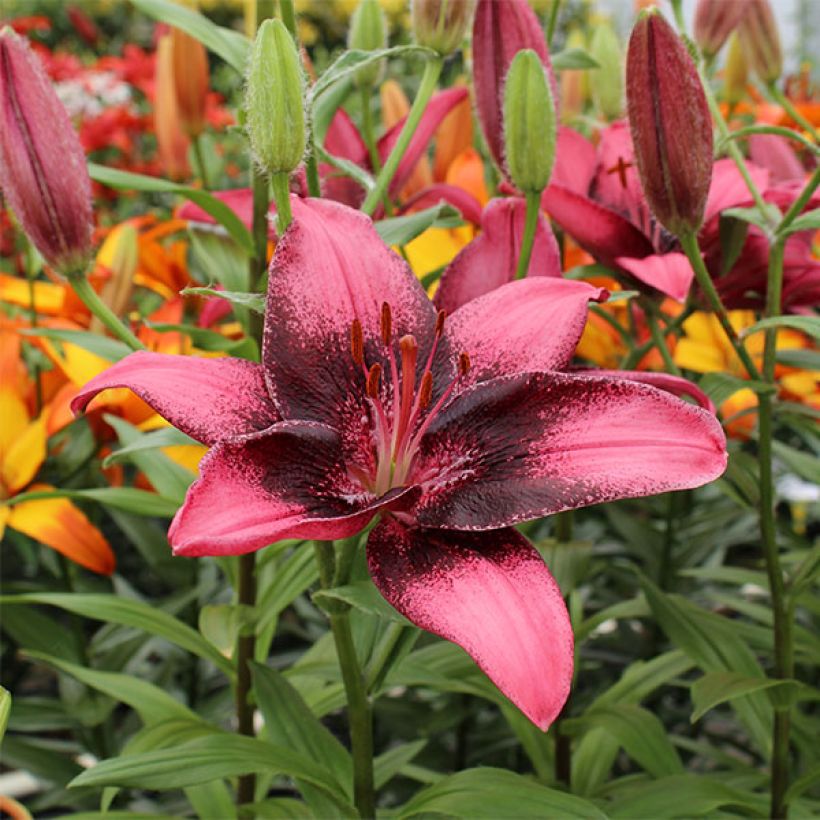

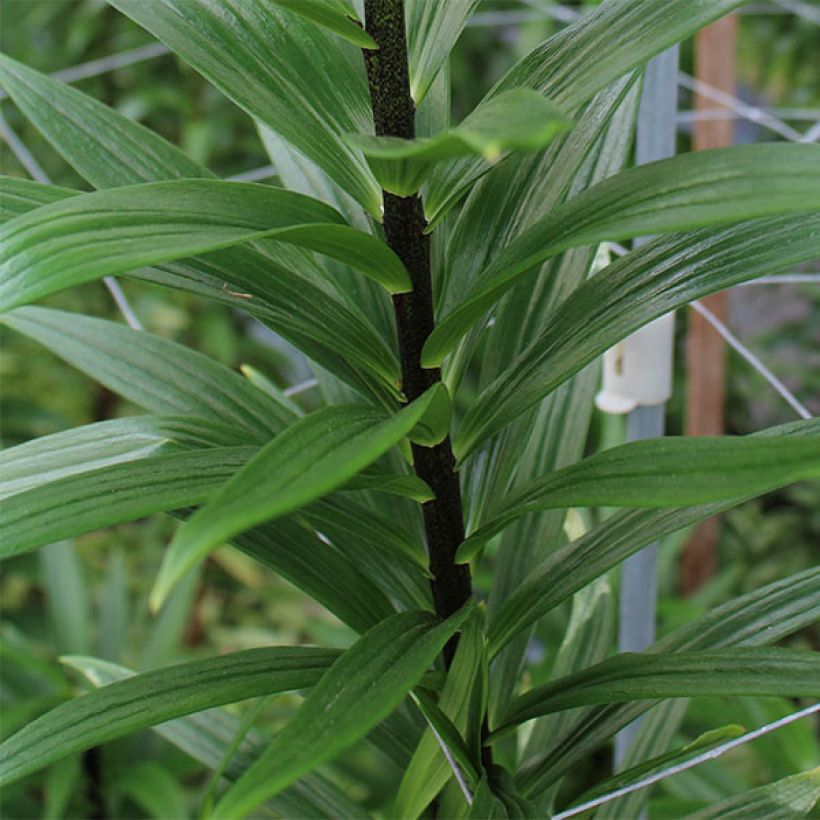

Plant habit
Flowering
Foliage
Botanical data
Lilium
x asiatica
Purple Eye
Liliaceae
Asiatic Lily
Cultivar or hybrid
Other Hybrid Lilies
Planting and care
'Purple Eye' likes humus-rich, fertile, well-drained, and light soil. Plant it in full sun, preferably in spring, with the bulbs 15 cm (6in) deep in soil mixed with leaf compost. In a sand pocket, they will avoid rot as well as attacks from slugs. Mark the planting location, as vegetation only starts in April.
Stake them when the stems reach 30 cm (12in) high. If red lily beetles appear, treat them immediately, as their larvae can devour all the leaves. The most effective method is to catch them manually but be careful as they drop as soon as they are touched. After flowering, it is a good idea to cut off the faded flowers halfway to keep the bed beautiful during the summer.
Tips for planting lilies in compact soil: Lily bulbs don't like clay soils that suffocate them and cause rot. In Eastern Europe, they are planted on "benches" built above ground level. These benches consist of a layer of gravel, on which tightly packed branches are placed. Then cover everything with a thick layer of compost, 20 to 30 cm (8 to 12in) deep. Plant the bulbs in the compost, on which you can also let some ground cover plants creep.
On the terrace, you can create sumptuous pots with lilies. Choose a container that is large and deep enough (at least 16 cm (6in) for a bulb). Fill it with a mixture of garden soil, leaf compost, and sand. Plant the lilies in groups of 3 to 5 bulbs, depending on the size of the pot,10-15 cm (4-6in) apart, then water generously. Place the pots in a cool room or outside once the frost has passed. Apply liquid fertiliser twice a month until the flower buds appear.
Planting period
Intended location
Care
-
, onOrder confirmed
Reply from on Promesse de fleurs
Bulbs to grow in pots
Haven't found what you were looking for?
Hardiness is the lowest winter temperature a plant can endure without suffering serious damage or even dying. However, hardiness is affected by location (a sheltered area, such as a patio), protection (winter cover) and soil type (hardiness is improved by well-drained soil).

Photo Sharing Terms & Conditions
In order to encourage gardeners to interact and share their experiences, Promesse de fleurs offers various media enabling content to be uploaded onto its Site - in particular via the ‘Photo sharing’ module.
The User agrees to refrain from:
- Posting any content that is illegal, prejudicial, insulting, racist, inciteful to hatred, revisionist, contrary to public decency, that infringes on privacy or on the privacy rights of third parties, in particular the publicity rights of persons and goods, intellectual property rights, or the right to privacy.
- Submitting content on behalf of a third party;
- Impersonate the identity of a third party and/or publish any personal information about a third party;
In general, the User undertakes to refrain from any unethical behaviour.
All Content (in particular text, comments, files, images, photos, videos, creative works, etc.), which may be subject to property or intellectual property rights, image or other private rights, shall remain the property of the User, subject to the limited rights granted by the terms of the licence granted by Promesse de fleurs as stated below. Users are at liberty to publish or not to publish such Content on the Site, notably via the ‘Photo Sharing’ facility, and accept that this Content shall be made public and freely accessible, notably on the Internet.
Users further acknowledge, undertake to have ,and guarantee that they hold all necessary rights and permissions to publish such material on the Site, in particular with regard to the legislation in force pertaining to any privacy, property, intellectual property, image, or contractual rights, or rights of any other nature. By publishing such Content on the Site, Users acknowledge accepting full liability as publishers of the Content within the meaning of the law, and grant Promesse de fleurs, free of charge, an inclusive, worldwide licence for the said Content for the entire duration of its publication, including all reproduction, representation, up/downloading, displaying, performing, transmission, and storage rights.
Users also grant permission for their name to be linked to the Content and accept that this link may not always be made available.
By engaging in posting material, Users consent to their Content becoming automatically accessible on the Internet, in particular on other sites and/or blogs and/or web pages of the Promesse de fleurs site, including in particular social pages and the Promesse de fleurs catalogue.
Users may secure the removal of entrusted content free of charge by issuing a simple request via our contact form.
The flowering period indicated on our website applies to countries and regions located in USDA zone 8 (France, the United Kingdom, Ireland, the Netherlands, etc.)
It will vary according to where you live:
- In zones 9 to 10 (Italy, Spain, Greece, etc.), flowering will occur about 2 to 4 weeks earlier.
- In zones 6 to 7 (Germany, Poland, Slovenia, and lower mountainous regions), flowering will be delayed by 2 to 3 weeks.
- In zone 5 (Central Europe, Scandinavia), blooming will be delayed by 3 to 5 weeks.
In temperate climates, pruning of spring-flowering shrubs (forsythia, spireas, etc.) should be done just after flowering.
Pruning of summer-flowering shrubs (Indian Lilac, Perovskia, etc.) can be done in winter or spring.
In cold regions as well as with frost-sensitive plants, avoid pruning too early when severe frosts may still occur.
The planting period indicated on our website applies to countries and regions located in USDA zone 8 (France, United Kingdom, Ireland, Netherlands).
It will vary according to where you live:
- In Mediterranean zones (Marseille, Madrid, Milan, etc.), autumn and winter are the best planting periods.
- In continental zones (Strasbourg, Munich, Vienna, etc.), delay planting by 2 to 3 weeks in spring and bring it forward by 2 to 4 weeks in autumn.
- In mountainous regions (the Alps, Pyrenees, Carpathians, etc.), it is best to plant in late spring (May-June) or late summer (August-September).
The harvesting period indicated on our website applies to countries and regions in USDA zone 8 (France, England, Ireland, the Netherlands).
In colder areas (Scandinavia, Poland, Austria...) fruit and vegetable harvests are likely to be delayed by 3-4 weeks.
In warmer areas (Italy, Spain, Greece, etc.), harvesting will probably take place earlier, depending on weather conditions.
The sowing periods indicated on our website apply to countries and regions within USDA Zone 8 (France, UK, Ireland, Netherlands).
In colder areas (Scandinavia, Poland, Austria...), delay any outdoor sowing by 3-4 weeks, or sow under glass.
In warmer climes (Italy, Spain, Greece, etc.), bring outdoor sowing forward by a few weeks.
